The best Flank Steak Marinade for grilling or searing flank steak! This simple marinade yields amazing meat for tacos and burritos and also makes for an amazing main dish to be served alongside side dishes. Whip up this easy steak marinade for any cut of steak, or even chicken or pork!
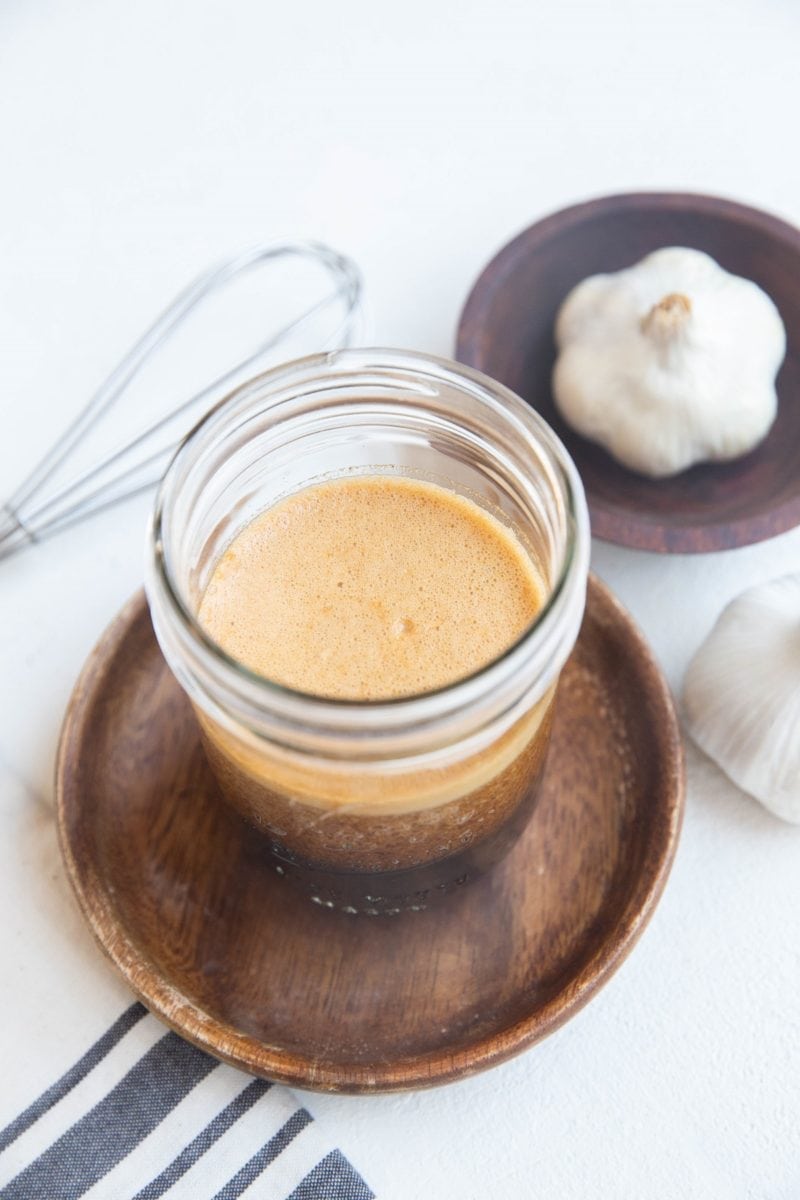
So you’re looking for an amazing marinade to use on your flank steak, skirt steak, or really any steak?
You’re in the right place, because this easy flank steak marinade turns any basic steak into an absolute dreamboat!
Let’s dive right into the details!
Why This Recipe Works:
The combination of sweet, umami, tangy, and savory flavors checks all the boxes for a palatable experience.
There’s even the tiniest, almost undetectable kick of spice, which helps round out the whole experience.
As I mentioned in my Carne Asada recipe post, flank steak (and skirt steak) is trimmed of excess fat and doesn’t contain very much intramuscular fat, making it a leaner cut of meat. It can also be a tough cut of meat.
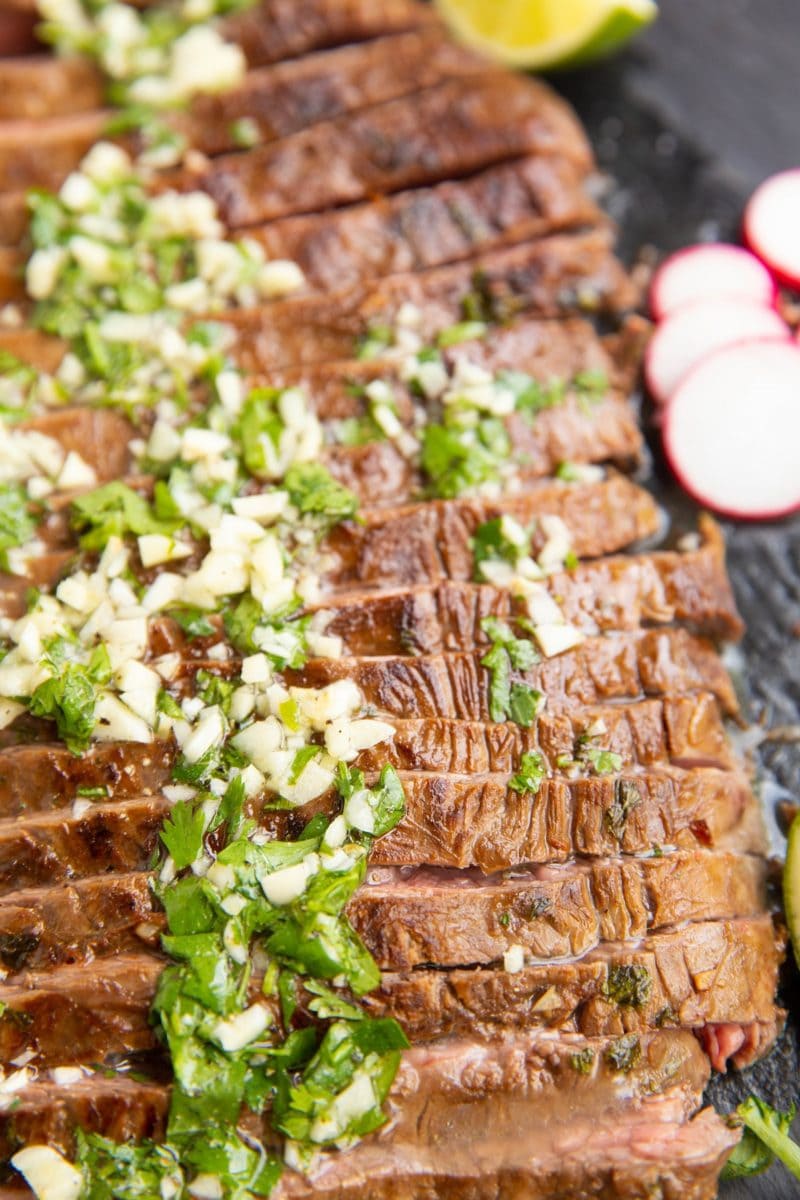
For this reason, lean cuts of meat like flank steak are ideal for marinating because the marinade helps inject flavor both by way of salt content and by way of tasty, fresh ingredients.
In addition, the salt helps to tenderize the meat so that you’re left with juicy flank steak with plenty of flavor. The right marinade turns a drab cut of beef into an otherworldly adventure.
I rarely marinate steaks that have good fat content like Ribeye or New York Strip, but almost always marinate lean meat.
Using pantry staples, we can make an amazing flank steak or skirt steak marinade for a flavorful cut of beef.
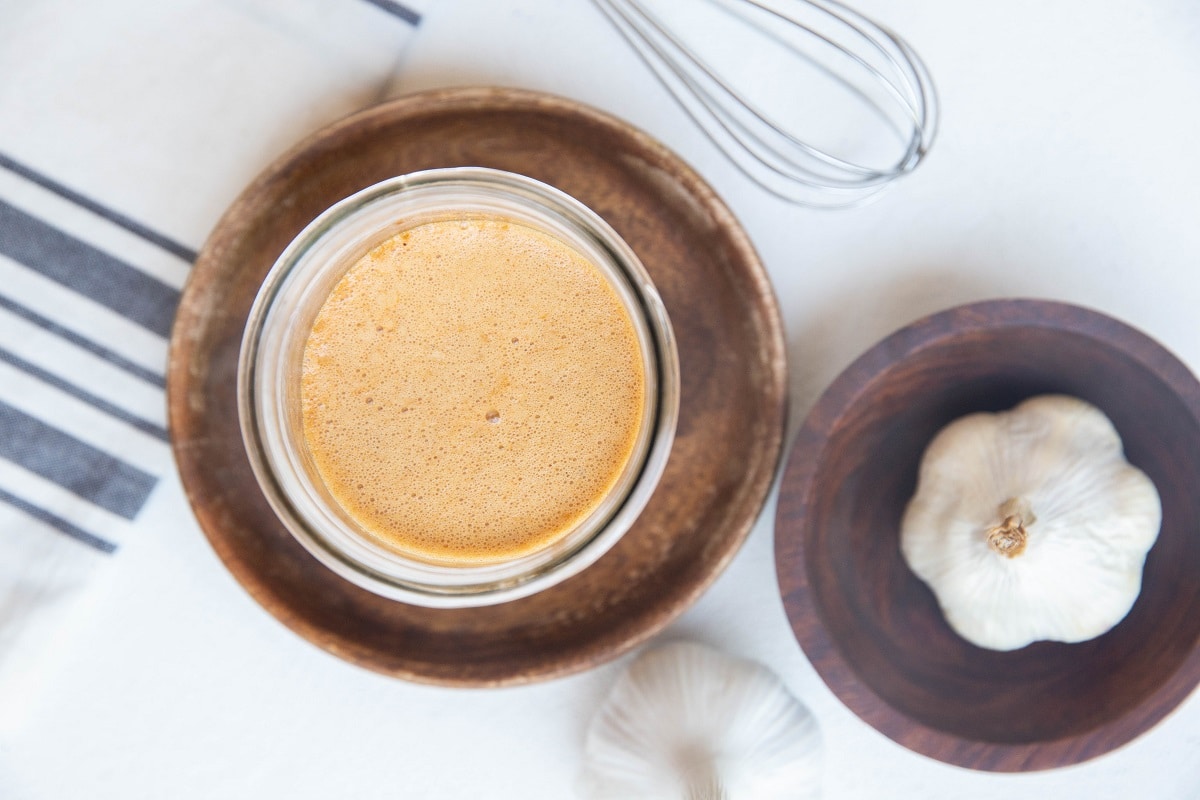
Let’s discuss the simple ingredients needed to make this delicious flank steak marinade.
Ingredients For Flank Steak Marinade Recipe:
Coconut Aminos, Soy Sauce, or Liquid Aminos: Depending on what you have on hand and whether or not you’re soy-free, use coconut aminos, soy sauce, tamari, or liquid aminos (which is gluten-free). Coconut aminos is a soy-free option that adds savory flavor and is also naturally sweet.
If you aren’t concerned about the soy content, soy sauce, tamari, or liquid aminos work. Be sure to use tamari or liquid aminos for gluten-free.
Because the soy option doesn’t contain sweetness, I recommend adding the optional pure maple syrup to ensure your marinade contains a bit of sweet. This helps round out the flavor palate and offsets some of the sour and umami flavors.
Avocado Oil or Olive Oil: Adding a little fat to the marinade helps bring a little flavor to the otherwise lean meat and also helps protect the outside of the meat from burning during the grilling or searing process. You can use avocado oil, extra virgin olive oil, vegetable oil, or any cooking oil you prefer.
Fresh Garlic: This recipe calls for a whopping five cloves garlic because garlic truly makes a delicious marinade. This will easily become one of your favorite recipes for marinating meat because it has such intense flavor!
Rice Vinegar: Bringing tangy flavor to the meat, rice vinegar is a star ingredient that you wouldn’t think is important but is actually quite crucial. The best optional replacements for rice vinegar are cider vinegar, balsamic vinegar, red wine vinegar, or lime juice or lemon juice.
Sriracha: Giving a slight kick of heat that is nearly unnoticeable, sriracha brings that little something extra to the flavor experience.
Beef Broth: In order to dull out some of the huge flavor from the soy sauce, we add a touch of broth or water.
Fish Sauce: Adding umami flavor to meat helps level up the perceived meatiness. It’s a difficult flavor to describe, but I look at umami as richness, depth of flavor, and savoriness. If you don’t have fish sauce on hand, you can replace it with Worcestershire sauce, skip it, If you omit and don’t replace it, add some salt, as fish sauce also brings a great deal of saltiness to the marinade.
Pure Maple Syrup (optional): If you’re using soy sauce, tamari, or liquid aminos, I recommend also adding pure maple syrup or brown sugar for sweetness. You wouldn’t think you’d need sweetness in a marinade, but trust me, it is a game changing experience!
Ground Ginger & Black Pepper: Ground ginger and black pepper are magnificent in marinades to bring forth a unique and delicious flavor.
Depending on what flavors you like with your meat, you can make all sorts of adaptations to this recipe. Add fresh cilantro, dried rosemary, dried oregano, cayenne pepper, paprika, red pepper flakes, dijon mustard, or any of your favorite spices that you trust in a marinade.
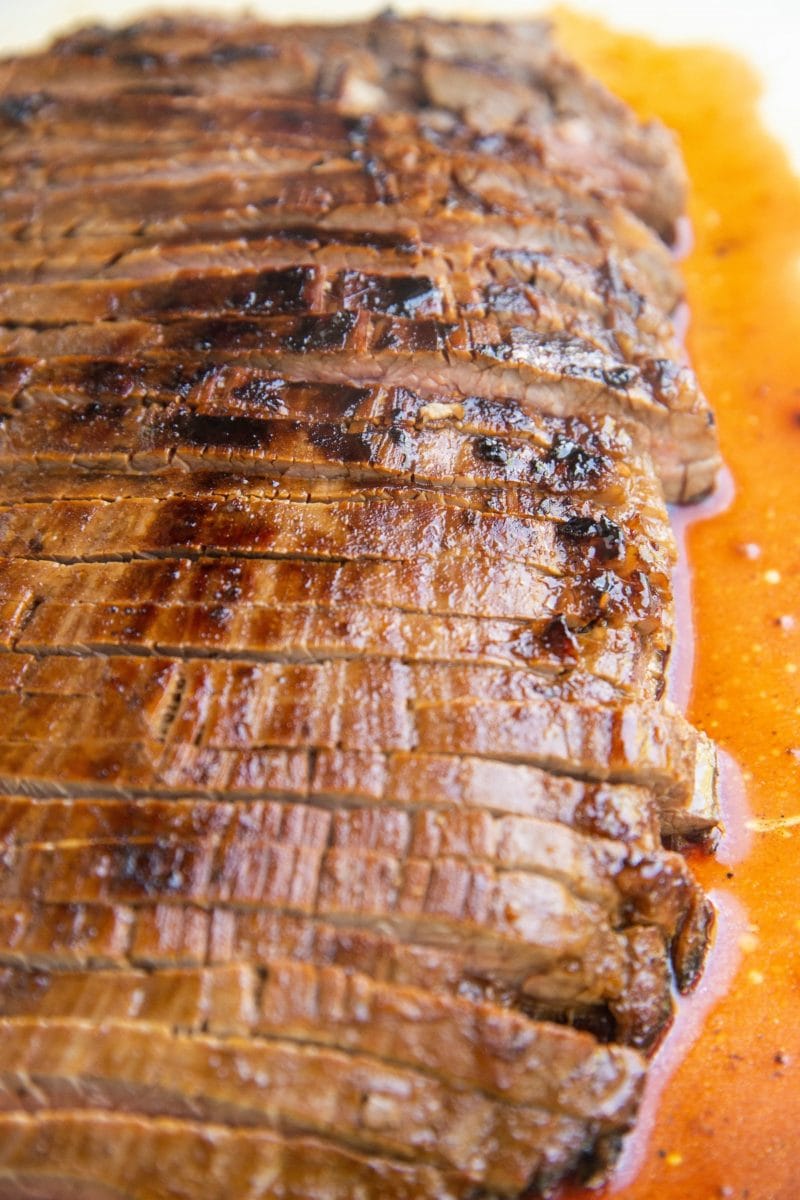
How to Make Flank Steak Marinade:
Making marinades is so silly simple, you’ll never not make them again!
Simply add all of the ingredients to a blender (I use my Magic Bullet because it has a small carafe and we aren’t making a huge amount of marinade).
How Much Marinade Does This Recipe Make?:
This flank steak recipe makes about 1 ¼ cups of marinade, which is great for anywhere between 2 and 4 pounds of meat. Less than 2 pounds, you won’t need the whole batch. More than 4 pounds, you’ll want to double the marinade or increase the ratios appropriately.
How to Cook Flank Steak:
The best way to cook juicy steak is by grilling it on a gas or charcoal grill or searing it in a large cast iron skillet on the stove top.
Both methods allow you to get an amazing charred outside while keeping the inside nice and tender. Plus, checking the internal temperature of the steak is very easy using a meat thermometer so that you know what level of doneness the meat is at any given moment.
Grilled Flank Steak:
Fire up your gas grill or charcoal grill until it reaches high heat (400 to 500 degrees Fahrenheit). Remove the flank steak from the marinade and allow any excess marinade to drip off. Transfer the flank steak to a hot side of the grill (direct heat). Sear both sides for 6 minutes for medium-rare steak, or until the flank steak reaches your desired level of doneness.
Pan-Seared Flank Steak:
Heat a large cast iron skillet (12 inches or larger) over medium-high heat and add enough high temperature cooking oil (such as avocado oil) to generously coat the surface, about 1 to 2 tablespoons.
Once the skillet is very hot, remove the meat from the marinade and allow any excess marinade to drip off. Carefully place steak on the hot skillet and sear for 6 to 8 minutes per side, or until the steak reaches your desired level of done-ness.
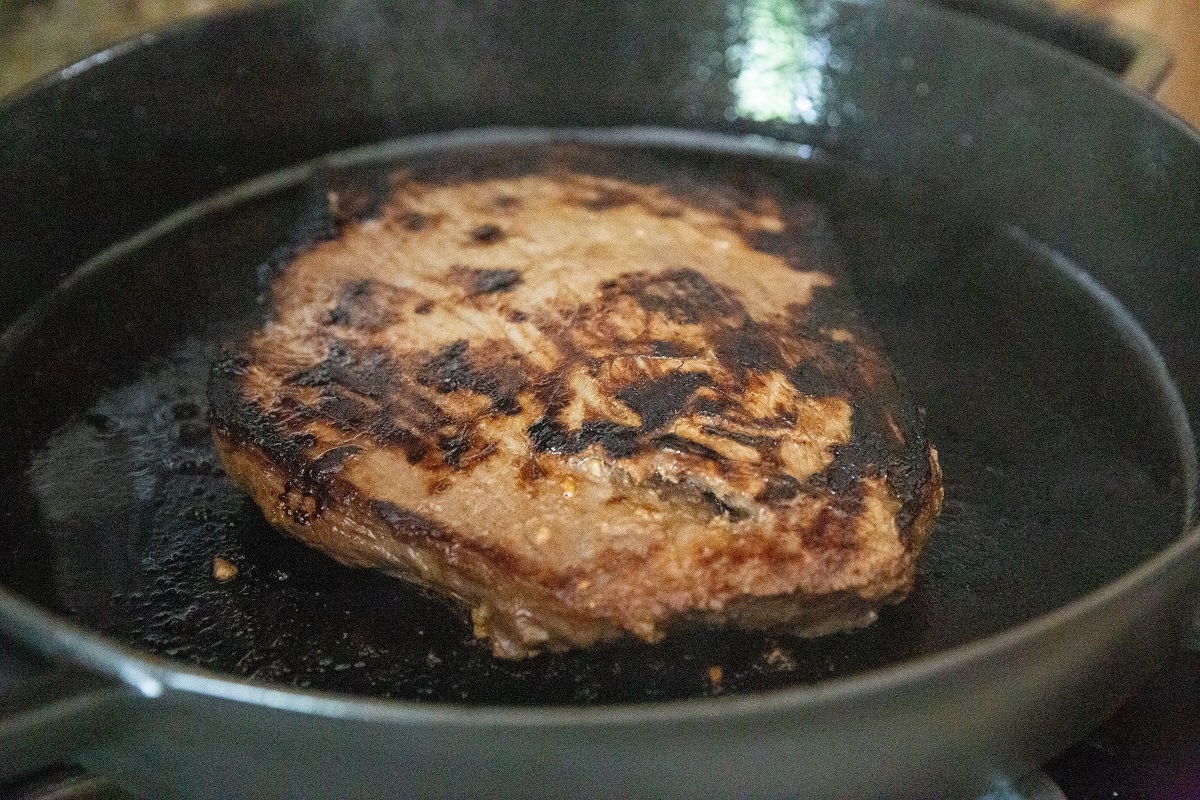
Meat Cooking Temperatures:
Use a meat thermometer to check the internal temperature of the steak to ensure you’re achieving just the right temperature according to your preferred degree of doneness. To do so, insert the instant read thermometer into the thickest part of the meat. Wait until the numbers stop moving for an accurate read.
Aim for 125 to 130 degrees Fahrenheit for medium-rare steak, 135 to 140 for medium and 145 or higher for well-done.
Allow the Meat To Rest:
Once the steak has finished cooking, transfer it to a large cutting board and allow it to rest for at least 15 minutes. This gives the juices a chance to distribute throughout the meat and leaves you with a juicy tender steak that is easier to cut.
After the meat has rested, use a sharp knife to cut thin slices (¼ inch or thinner) against the grain of the meat.
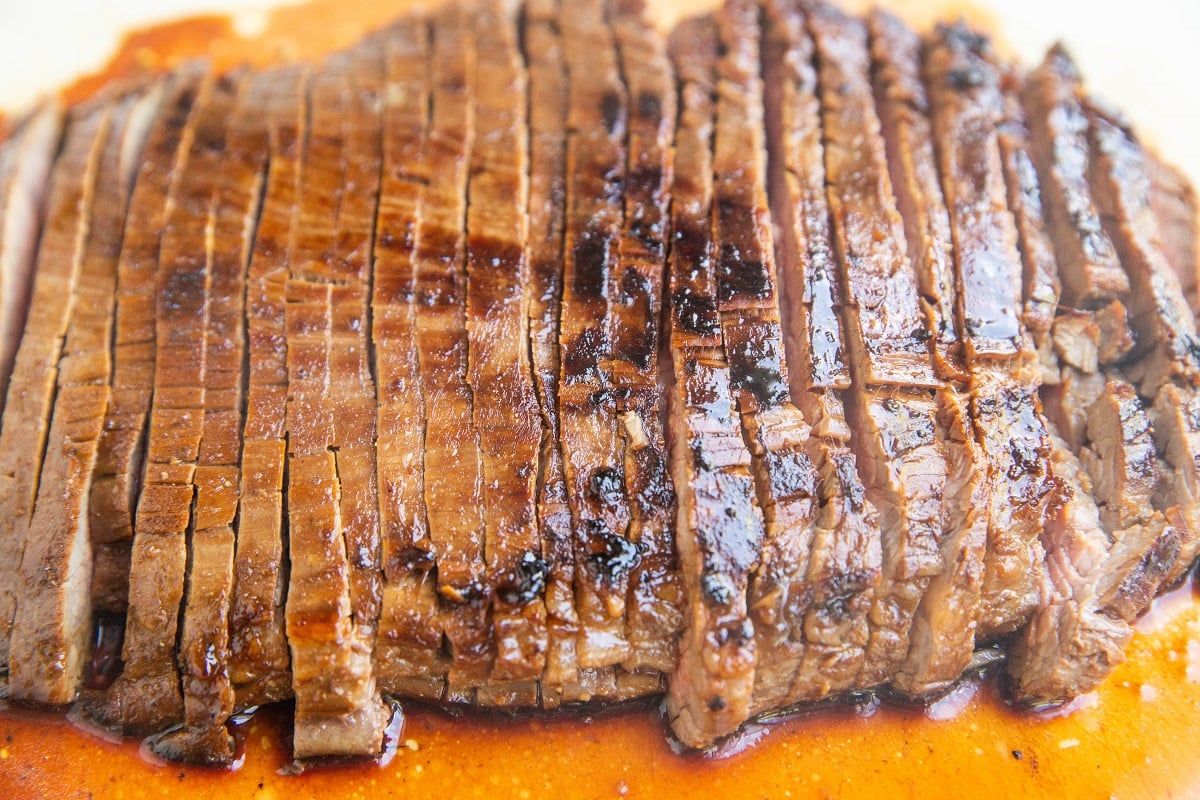
What To Do With Flank Steak:
So you have a glorious marinated flank steak and you aren’t sure what to do with it?
Make flank steak tacos (recipe coming soon), beef burritos, or Easy Steak Fajitas (using the marinade in this recipe).
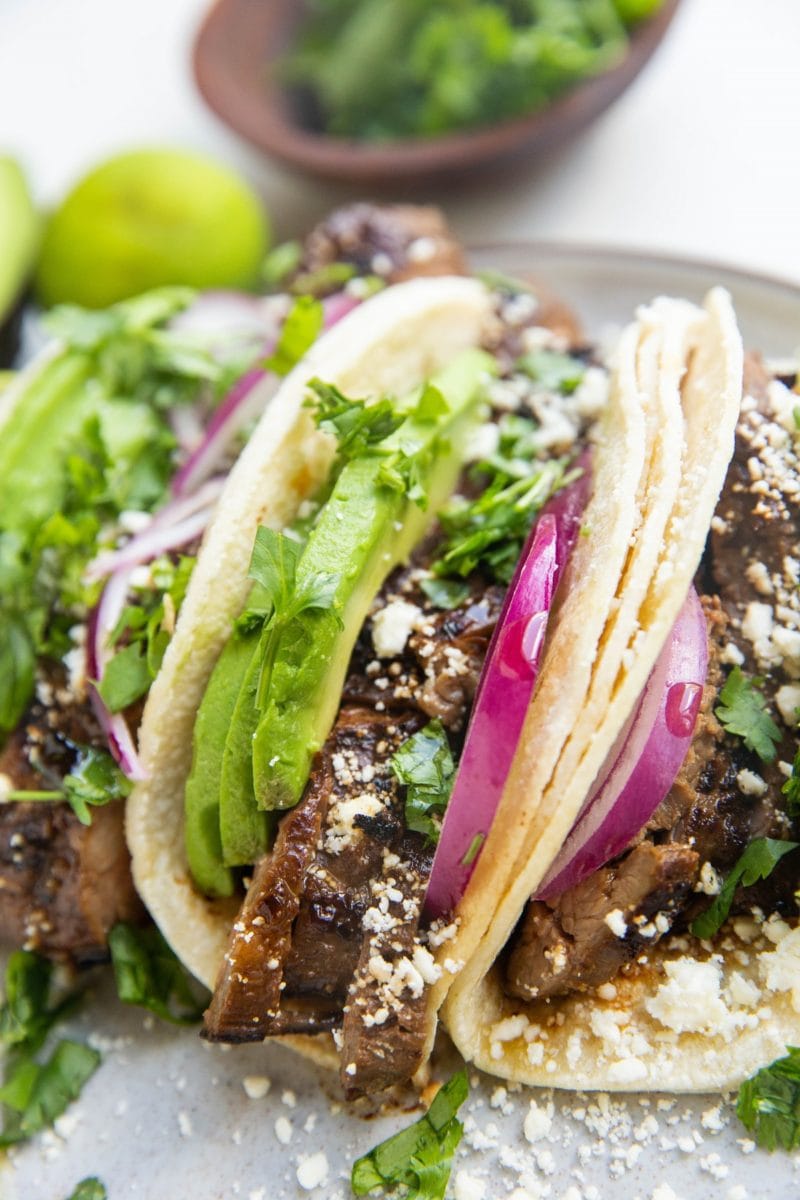
Serve sliced flank steak up with your choice of side dishes like Homemade Spanish Rice and Instant Pot Black Beans for an amazing meal.
You can also use flank steak in burrito bowls or steak salads!
If you love using dry rubs and marinades to flavor your meat, also try my Basil Marinade for Chicken and my Dry Rub For Ribs.
I hope you love this great marinade for flank steak! If you make it, feel free to circle back and tell me how you used your steak.
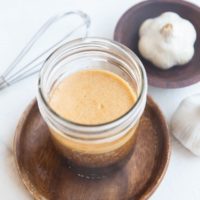
Flank Steak Marinade
Ingredients
- ½ cup coconut aminos soy sauce, or liquid aminos*
- 3 Tbsp avocado oil or olive oil
- 5 cloves garlic minced
- ¼ cup rice vinegar**
- 1 Tbsp sriracha optional
- ¼ cup beef broth or water
- 2 tsp fish sauce or Worcestershire sauce
- 2 Tbsp pure maple syrup or cane sugar***
- 1 tsp ground ginger
- 1/4 tsp black pepper
Instructions
- Add all of the ingredients to a blender (I use my Magic Bullet because it has a small carafe and we aren’t making a huge amount of marinade).
- Blend the marinade until everything is well-combined. After the marinates sits for a while, there will be some separation – simply blend it again or stir it well before using.
- Use the marinade or save it in an airtight container in the refrigerator for up to 1 week. To marinate flank steak or skirt steak, place the meat in a large 1-gallon zip lock bag. Pour in the marinade, deal the bag and refrigerate for at least 1 hour, ideally longer (up to 24 hours).
- When you're ready to cook, use your preferred method: grilling or pan-searing.
Grilled Flank Steak:
- Fire up your gas grill or charcoal grill until it reaches high heat (400 to 500 degrees Fahrenheit). Remove the flank steak from the marinade and allow any excess marinade to drip off. Transfer the flank steak to a hot side of the grill (direct heat). Sear both sides for 6 minutes for medium-rare steak, or until the steak reaches your desired level of doneness.
Pan-Seared Flank Steak:
- Heat a large cast iron skillet (12 inches or larger) over medium-high heat and add enough high temperature cooking oil (such as avocado oil) to generously coat the surface, about 1 to 2 tablespoons. Once the skillet is very hot, remove the meat from the marinade and allow any excess marinade to drip off. Carefully place steak on the hot skillet and sear for 6 to 8 minutes per side, or until the steak reaches your desired level of done-ness.
Check the Temperature:
- Use a meat thermometer to check the internal temperature of the steak to ensure you’re achieving just the right temperature according to your preferred degree of doneness. To do so, insert your instant read thermometer into the thickest part of the steak and let it sit until the numbers stop moving.
- Aim for 125 to 130 for medium-rare steak, 135 to 140 for medium and 145 or higher for well-done.
Let the Meat Rest:
- Once the steak has finished cooking, transfer it to a large cutting board and allow it to rest for at least 15 minutes. This gives the juices a chance to distribute throughout the meat and leaves you with a juicy tender steak that is easier to cut.
Notes
Nutrition
This post contains affiliate links, which means I make a small commission off items you purchase at no additional cost to you.
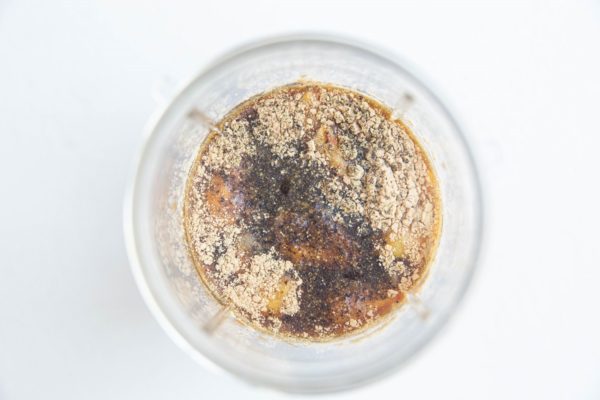
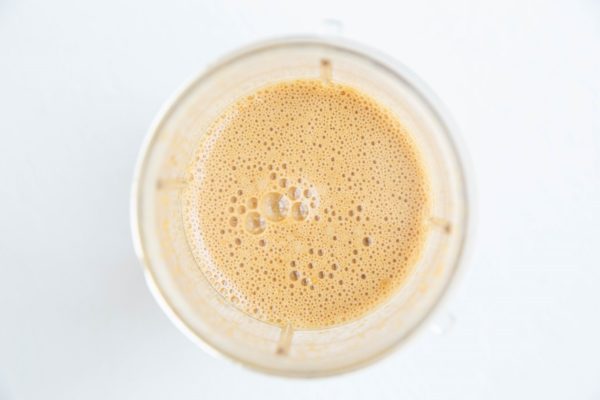
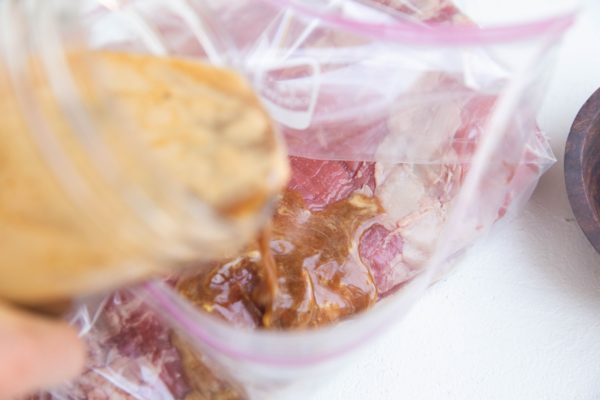
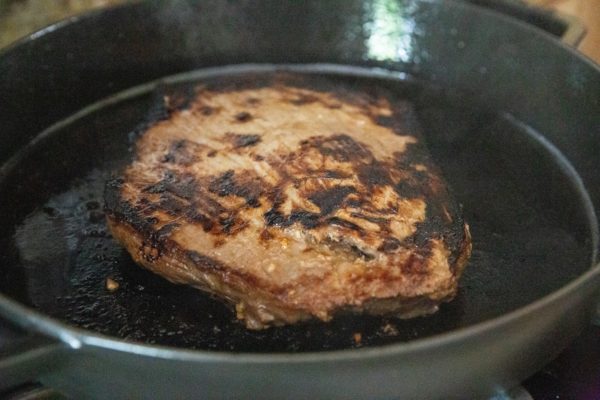
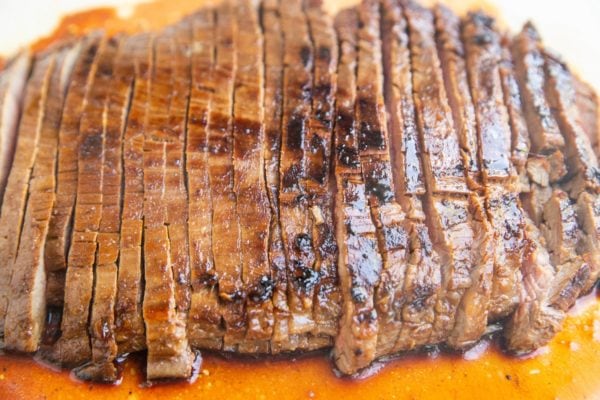

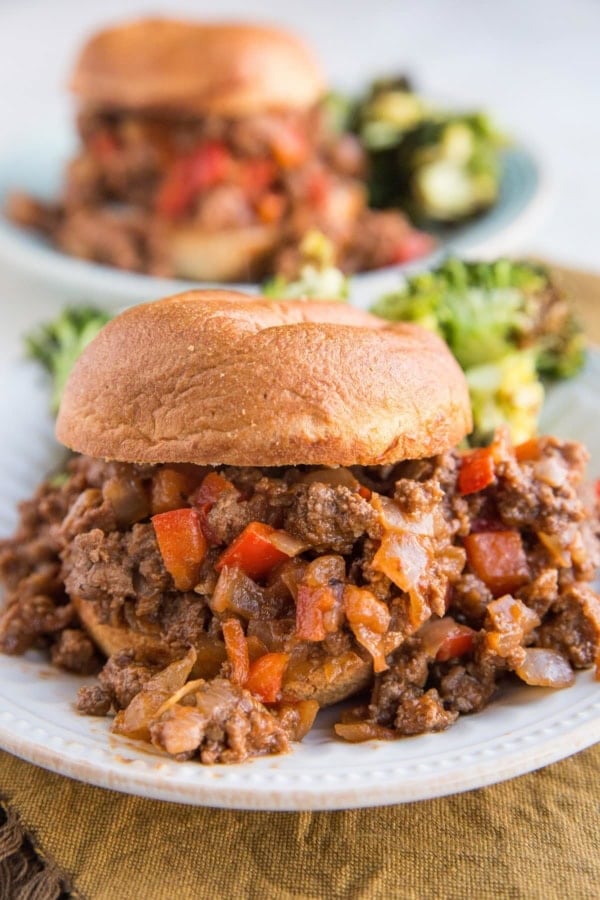
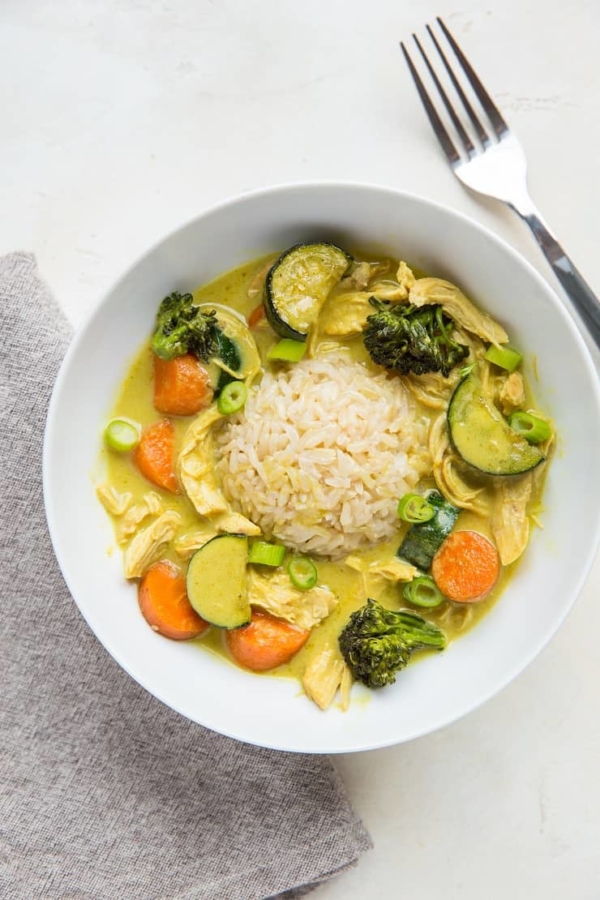
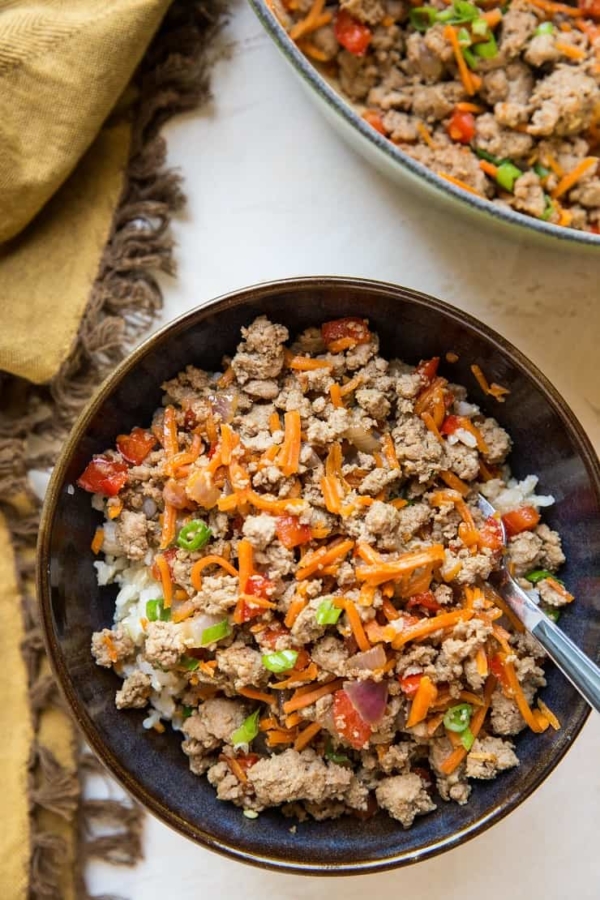
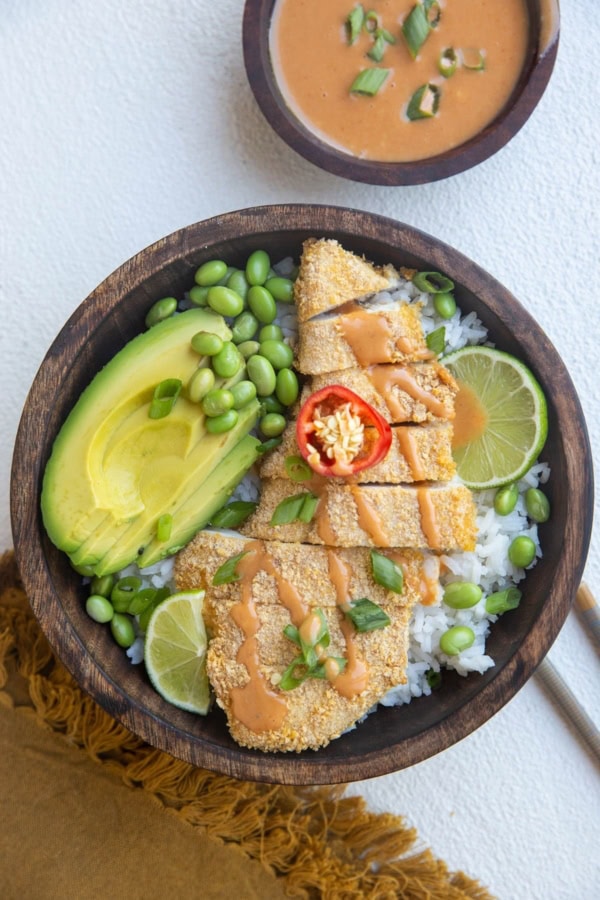









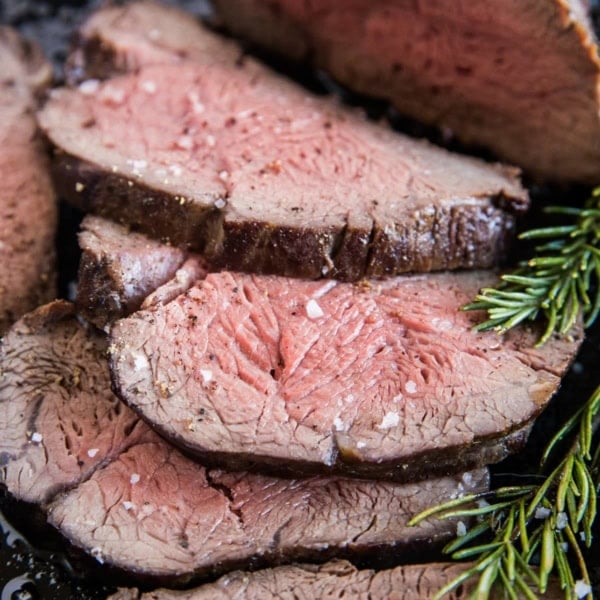
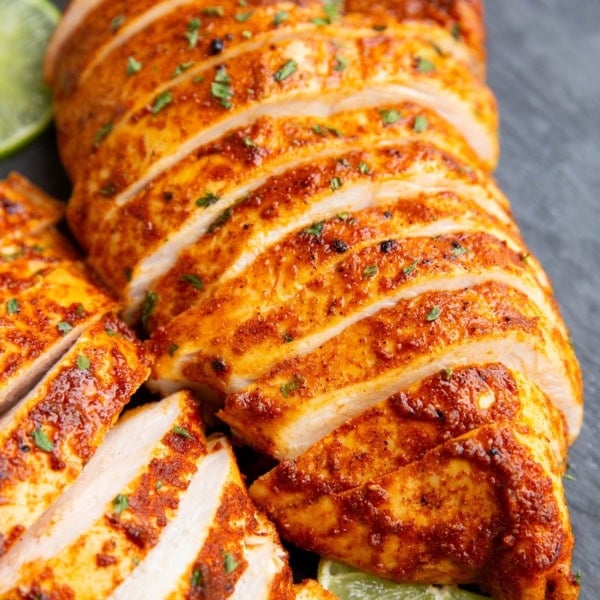
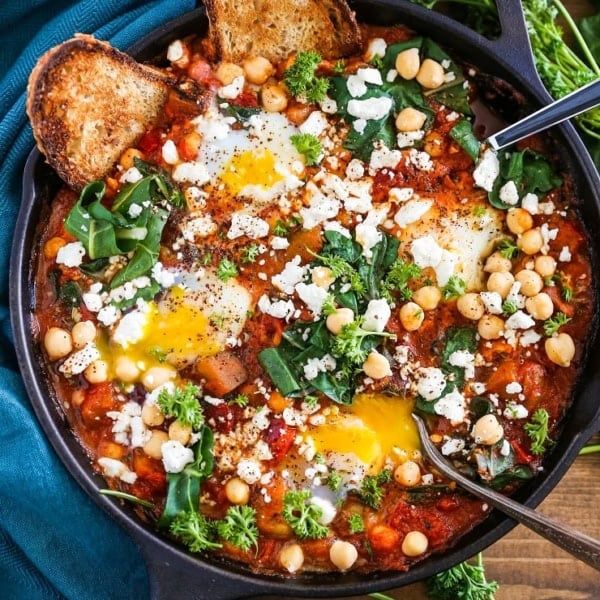
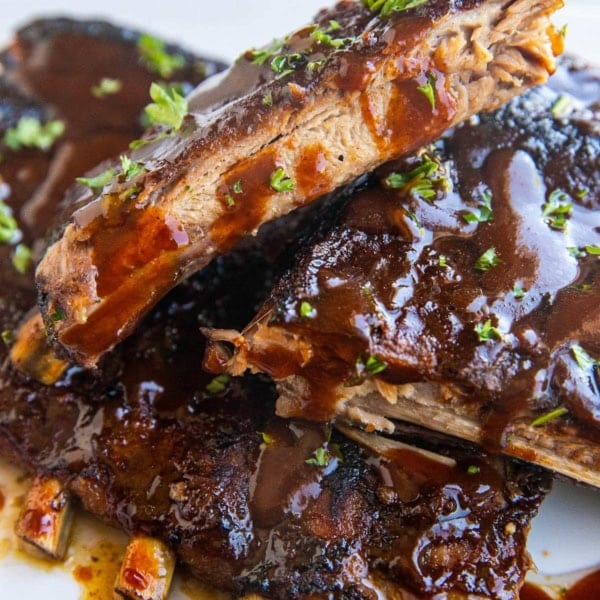
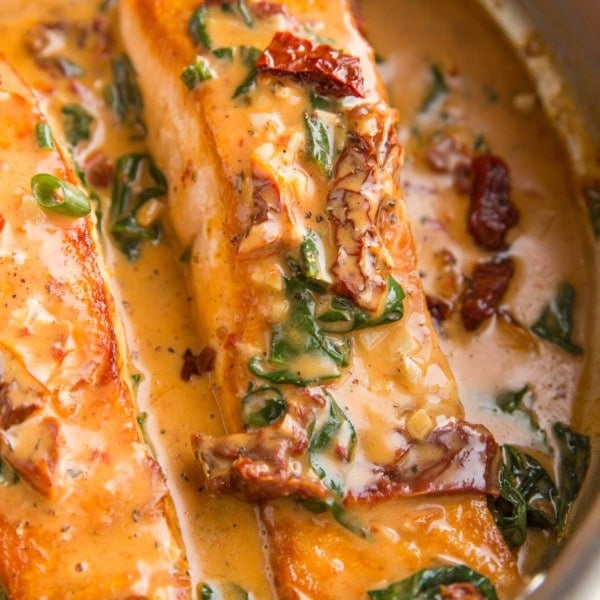
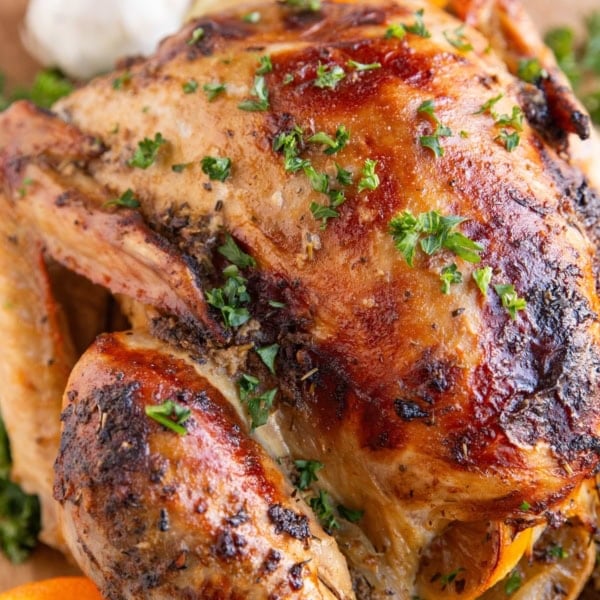
sounds delicious – I have found that folks are using fish sauce more and more for that “umami” flavoring. Always remember if you’re doing this to TELL PEOPLE because (as I am allergic to fish – not shellfish) I will happily eschew your delicious steak if it has fish sauce – but if I don’t know about it, you face me and my Epipen. 🙂 Especially things that I wouldn’t think WOULD have fish in them, now, I am constantly asking as fish sauce now shows up in everything from meat loaf to sauces. Thanks for your great recipes!
@Sandy, I’ve been making this marinade for over 30 years, however I don’t use fish sauce, broth or vinegar in it.
I use a dry red wine like a Bordeaux about a 1/2 -3/4cup, low sodium kinkomon soy sauce
Brown sugar etc
I also use it for pork tenderloin.
Marinate flank overnight
Pork about 6-8 hours is plenty as it is already tender
Bon appetite
Love that! Sounds amazing with the red wine. Yum! xoxo 🙂
That’s great advice, Sandy! Thank you for sharing 🙂